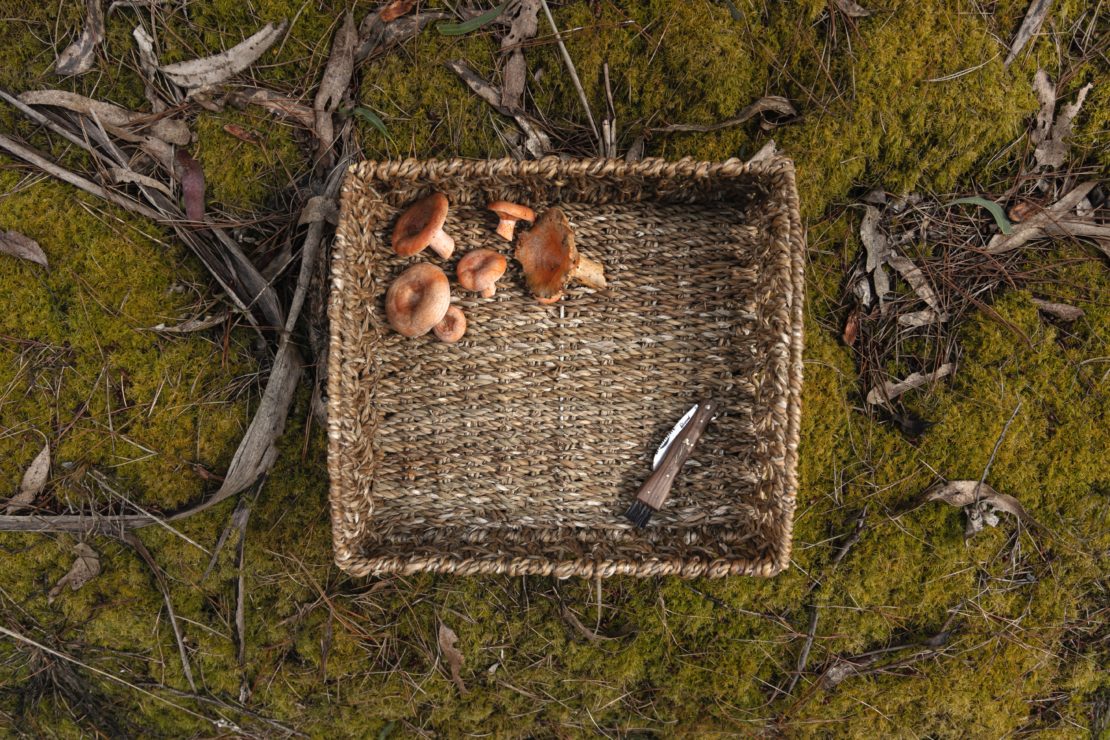
5 Essential Mushrooms for Your Home Apothecary
Mushrooms: they are as fascinating as they are mysterious. It seems as soon as you dive into the world of mycology, there is an overwhelming amount of information to learn, many rabbit trails to follow, and as many unanswered questions as there are answered ones.
While the scientific community has dubbed the study of fungi as one of the “last frontiers” of biology, one thing we know for certain is that mushrooms can make a valuable addition to our home apothecaries and wellness routines.
We recently released a new short course all about the fascinating world of fungi called The Mushroom Course. This course casts a light on this hidden kingdom, including the roles fungi play in their environment and how they can be used to benefit wellness and nutrition. Inside this course, we touch on the topics of mushrooms in folklore, how to use mushrooms to renew damaged ecosystems, how to incorporate mushrooms into everyday cooking, how to properly identify and safely forage for wild mushrooms, how to create high-quality mushroom preparations for the home apothecary, and more!
In this post, we’d like to share 5 essential mushrooms you can incorporate into your home apothecary as a way to give you a small glimpse inside of this targeted course. These essential mushrooms are likely some you’re already familiar with, but our hope is that after reading this article, you will feel better prepared and more confident to incorporate these mushrooms into your kitchen, home apothecary, and herbal preparations.
Essential Mushrooms for Your Home Apothecary
Mushrooms have many uses in our world today, one of which is to offer nutritional and wellness support for our bodies. Below we will discuss 5 essential mushrooms that are a great fit for the home apothecary.
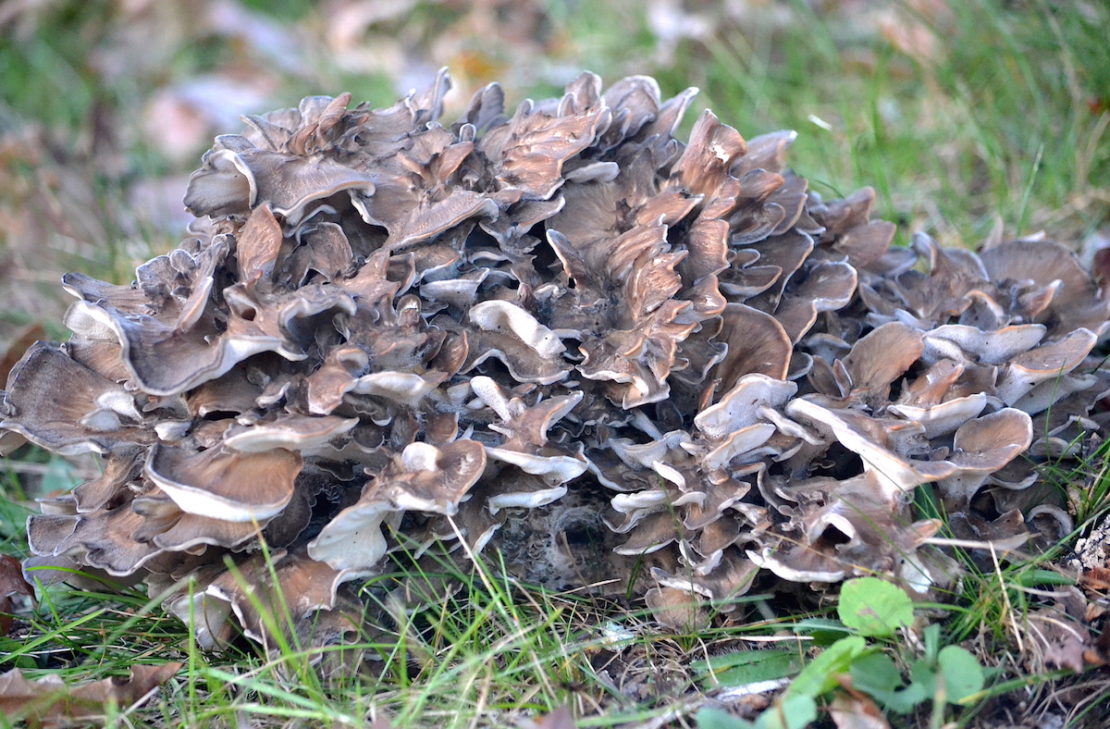
1. Maitake (Grifola frondosa) fruiting body
Maitake mushroom’s common name comes from the Japanese words for “dance” (mai) and “mushroom” (take)—the dancing mushroom! There are competing theories about the origin of the name, but one explanation holds that those who found this mushroom in the wild would break into a spontaneous dance of joy, possibly because this mushroom was so revered that it was worth its own weight in silver coin!
As with other immune-active mushrooms, maitake really shines in modulating immune function. The beta-glucan polysaccharides found in maitake, knowns as “D-fraction,” have been extensively researched for use in a range of immune conditions.
Maitake is also of interest for cardiovascular and metabolic health, as it may have hypoglycemic and hypotensive activity, help regulate blood lipid levels, and assist in weight loss, though these actions have not been confirmed through clinical trials. Preclinical trials have shown that it may be particularly helpful to restore insulin sensitivity and regulate blood glucose in people with type 2 diabetes, and in one clinical trial, maitake polysaccharide extract was found to improve insulin sensitivity and induce ovulation in patients with polycystic ovary syndrome (Chen et al., 2010).
Maitake may lower blood glucose levels and could have an additive effect with oral hypoglycemic agents (Brinker, 2010). When using maitake as a decoction, 3-7 g of the dried mushroom can be used per day. Alternatively, fresh or dried mushrooms can be used in cooking—it is considered an excellent culinary mushroom, with a rich, buttery flavor and meaty texture. Consuming maitake in the diet is a great way to benefit from its properties!
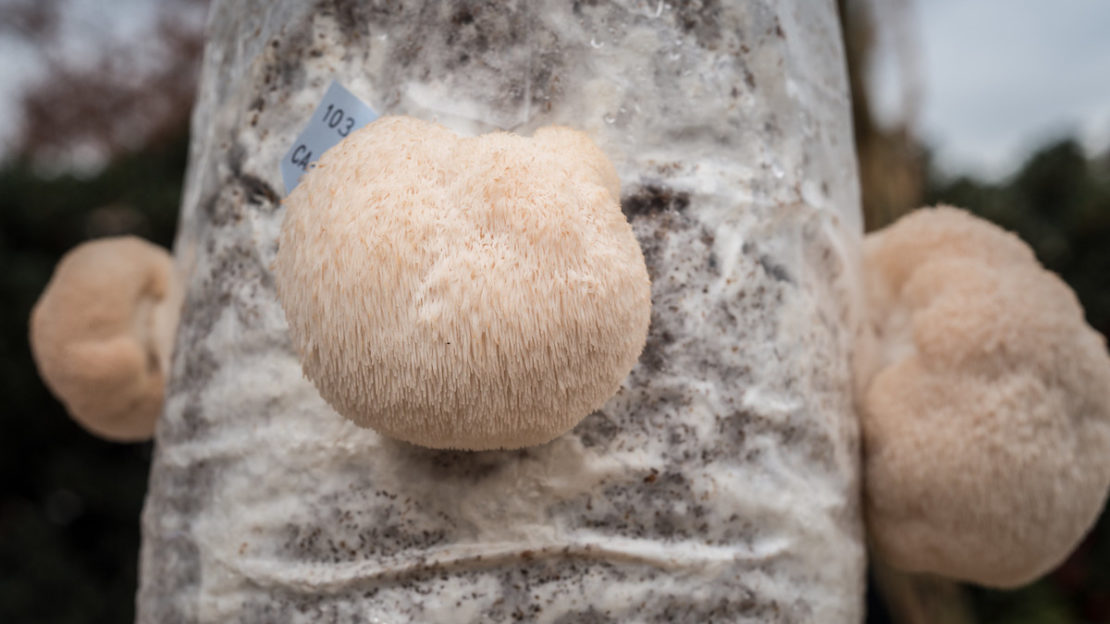
2. Lion’s Mane (Hericium erinaceus) fruiting body
Lion’s mane is among the easily recognized toothed mushrooms; it’s also been called satyr’s beard and pom pom mushroom, which give a very accurate picture! There are a number of Hericium species with a similar appearance that can be found in the United States, though none are truly common. H. erinaceus is the most well-known and widely studied species and is preferred for use in herbalism.
Lion’s mane is best known as a nervous system tonic or trophorestorative. It shares the immunomodulant and anti-inflammatory activity of other mushrooms used in herbalism, which may be one part of its use in neurodegenerative disorders with an inflammatory component such as Alzheimer’s and Parkinson’s disease.
Lion’s mane is considered to strengthen the Stomach and Spleen, and is used for digestive support in Chinese medicine. Laboratory studies have found that polysaccharide-rich extracts such as that from lion’s mane promote the health of the gastrointestinal mucosa, protect against gastric ulcers, and may help eradicate the Helicobacter pylori bacterium (He et al., 2017).
Finally, lion’s mane is traditionally used to calm the shen, which loosely translates as spirit. Herbs that calm shen are frequently helpful in anxiety, depression, and similar mood disturbances, and have a gently uplifting quality. This aligns with clinical evidence that shows lion’s mane can help alleviate depression and anxiety and enhance mental focus (Nagano et al., 2010), without any overly stimulating effect.
To make a lion’s mane decoction, use 3-5 grams of the dried fruiting body. It is also a delicious edible, often referred to as “crabmeat of the woods!”
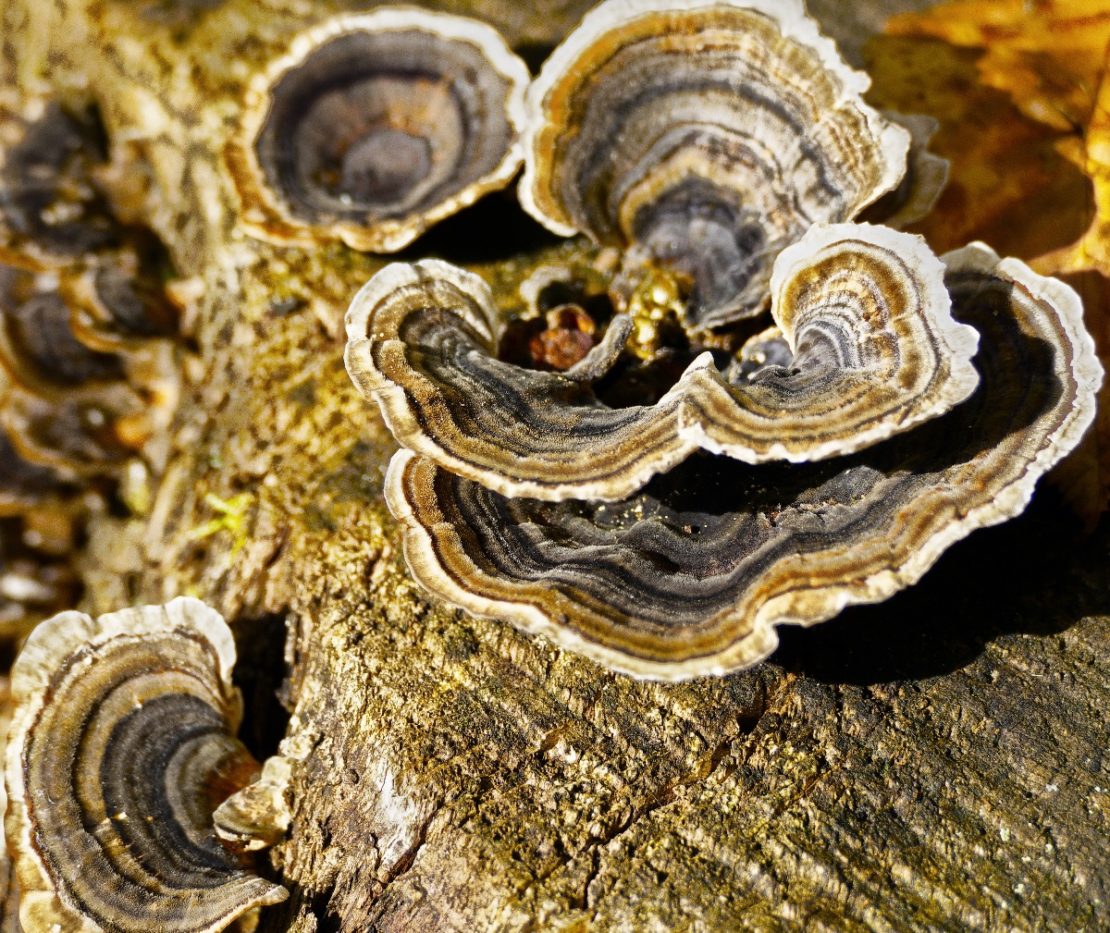
3. Turkey tail (Trametes versicolor) fruiting body
Turkey tail is a common and useful mushroom that’s relatively easy to find and identify. Simply look for fan-shaped clusters with concentric bands of varying colors, often found on dead or dying hardwood trees, logs, and stumps throughout the rainy season. Turkey tail dries well and can be readily prepared into a neutral-tasting decoction or incorporated into healthful broths and savory soups.
Turkey tail is best known for its immunomodulant polysaccharides, which are used to increase the activity of innate immune function. It has been shown to be particularly helpful to those with cancer, helping to protect against the side effects of chemotherapy and radiotherapy, and to those with chronic fatigue syndrome (CFS)/myalgic encephalomyelitis (ME) by increasing quality of life (Powell, 2014).
In Chinese medicine, turkey tail is sometimes used when infections and inflammation are present in the digestive, urinary, and respiratory systems (Rogers, 2011). It may also help ward off outbreaks of herpes simplex virus by stimulating immune function and by inhibiting viral activation (Powell, 2014).
Turkey tail mushrooms are also used to promote gut health through their prebiotic activity (Pallav et al., 2014), which has beneficial effects on metabolism, immunity, digestive function, and cardiovascular health.
As a general precaution, individuals using immunosuppressive drugs should use turkey tail under the guidance of an experienced practitioner (Brinker, 2010).
To use turkey tail, a decoction of 3-6 g of dried mushroom can be used each day for acute conditions and 1-2 g a day for tonic or ongoing conditions (Powell, 2014).
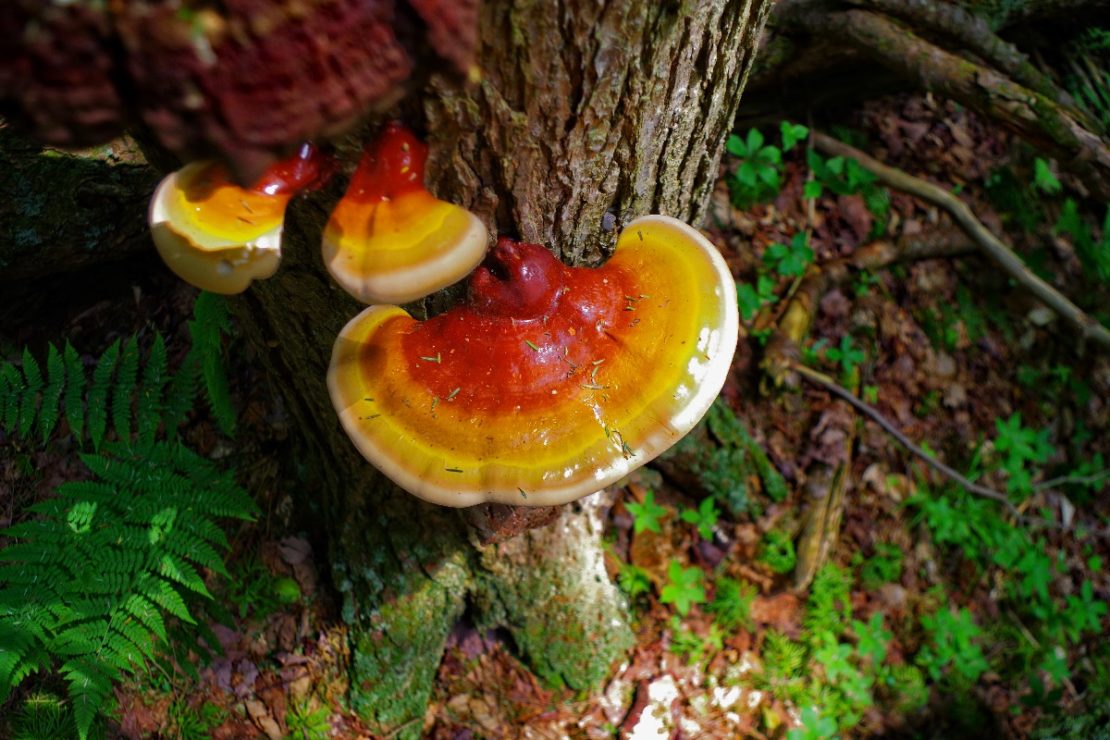
4. Reishi (Ganoderma lucidum) fruiting body
Reishi is a richly colored mushroom with a shiny, lacquered appearance when wet. When trekking through a misty forest on a drizzly autumn afternoon, catching sight of these lustrous shelf mushrooms can certainly bring brightness to your heart!
In the strictest sense, the common name “reishi” refers specifically to red reishi (Ganoderma lucidum), a single mushroom species that grows only in Northern Europe and parts of China. However, there are actually several species of Ganoderma that are more broadly lumped together under the common name “reishi,” and are considered completely interchangeable in commerce and herbal practice in both Chinese and Western herbalism.
A number of Ganoderma species, such as Oregon reishi (G. oregonense), artist’s conk or white reishi (G. applanatum), and hemlock reishi (G. tsugae), have been found to contain very similar immune-active polysaccharides, ganoderic acids, and other important terpenoids found in Ganoderma lucidum, along with glucans and other branched-chain polysaccharides (Sitkoff, 2015). Reishi has been extensively studied for its use in cancer, and it is frequently used in both Chinese and Western herbalism as part of adjunctive support during cancer treatment. In addition to supporting the innate immune response, compounds in reishi may be directly cytotoxic to cancer cells and prevent the growth and metastasis of tumors.
Red reishi (Ganoderma lucidum) is traditionally used as a longevity tonic in Chinese medicine; among other properties, it is used to uplift the spirit, strengthen the Heart, tonify qi and nourish the Blood (Powell, 2014), qualities that many Western herbalists associate with improving mood, energy, and immune function. These activities also align with reishi’s use in Western herbalism as an adaptogen to help restore function to the nervous and endocrine systems and modulate the body’s response to stress.
Reishi (Ganoderma spp.) is also used as a tonic for the lungs and may be helpful for support during asthma, bronchitis, and other respiratory conditions. It is frequently suggested for use in managing allergies and allergy-induced asthma, as it contains terpenoid compounds that inhibit histamine release, while immune-modulating polysaccharides can help to rebalance the underlying immune reactivity that causes mast cell activation and promotes allergic response. In Chinese medicine, white reishi (Ganoderma applanatum), also known as artist’s conk, is thought to have the most specific effect on the Lung (Hobbs, 1996; Sitkoff, 2015).
Reishi is considered energetically drying and neutral in temperature (neither warm nor cool), though this may vary slightly between different species.
Reishi should be used with caution by individuals taking immunosuppressant, anticoagulant, or antiplatelet medications (Gardner & McGuffin, 2013). A decoction of 3-12 g of dried mushroom can be used daily. If using reishi in tincture form, 4-8 mL (1:5, 30%) can be used 3 times a day (Winston & Kuhn, 2008).
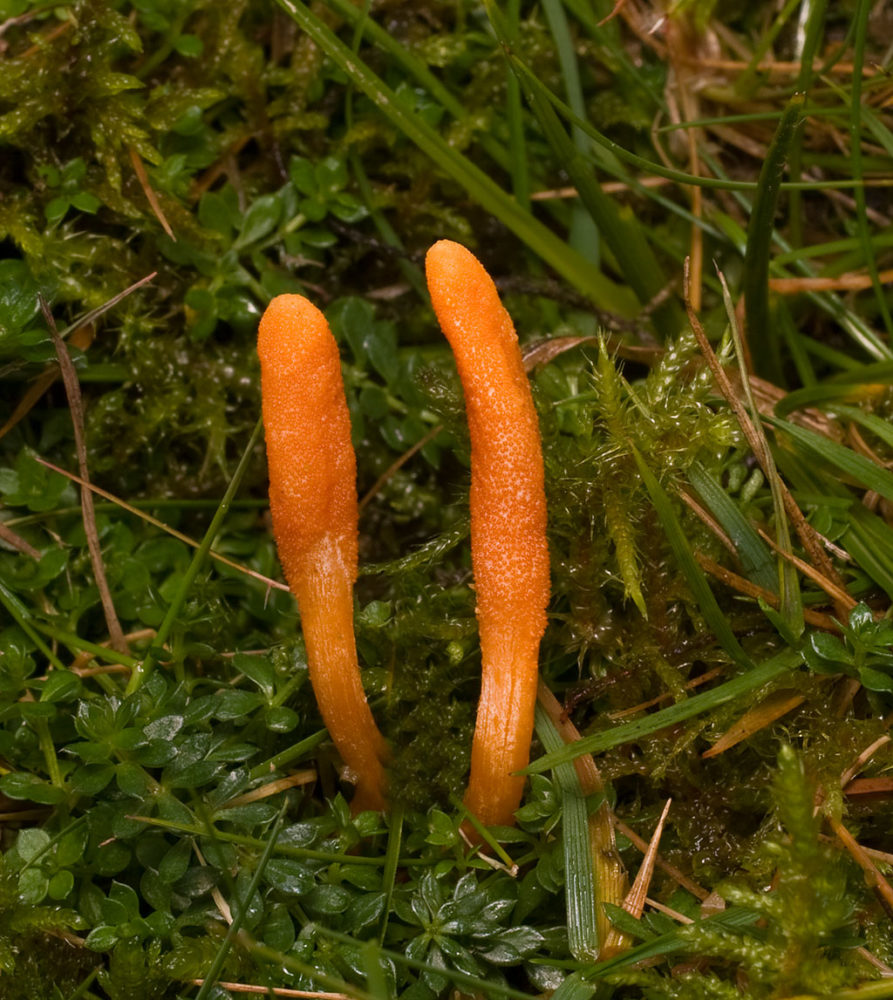
Cordyceps (Cordyceps militaris). “Scarlet Caterpillarclub – Fungi” (https://commons.wikimedia.org/wiki/File:Flickr_-_Scarlet_Caterpillarclub_-_Fungi.jpg) by David Evans [CC BY 2.0 (https://creativecommons.org/licenses/by/2.0)]
5. Cordyceps (Cordyceps militaris) fruiting body
Sometimes colorfully described as “ant zombie fungus,” cordyceps is an entomopathogenic fungus that survives by parasitizing the bodies of insects. After cordyceps spores take up residence in their caterpillar host, mycelia grow to eventually completely fill the insect’s body, with the club-shaped mushroom eventually emerging from the head to release spores and repeat its life cycle. Sounds lovely, right?
There are hundreds of species within the Cordyceps and Ophiocordyceps genera; the species included in official Chinese pharmacopeia is Ophiocordyceps sinensis (formerly Cordyceps sinensis), although Cordyceps militaris is generally used interchangeably. Both species have successfully been cultured and cultivated commercially, typically for use in commercial mushroom extracts.
In Chinese medicine, cordyceps have a sweet taste and neutral energetics. It is used to replenish the Kidney, soothe the Lung, stop bleeding, and eliminate phlegm. In addition to its use as an immunomodulant, cordyceps is also used in many instances of persistent fatigue, recovery after illness, and for support of respiratory, kidney, and sexual health (Hobbs, 1996; Lin & Li, 2011).
The use of cordyceps in Chinese medicine as a Kidney tonic is connected to actions that Western herbalism relates to sexual function and energy or vitality. Cordyceps is sometimes lauded as an “aphrodisiac” or sexual tonic, and it can certainly be helpful with low libido and other sexual hypofunction issues, but that may have as much to do with increasing energy and vitality as with actual effects on sex hormones.
Cordyceps has been demonstrated to improve aerobic capacity, fatigue resistance, and cellular energy production, and reduce the amount of oxygen needed to fuel the heart (Winston & Maimes, 2007). It has been used to support respiratory function, including chronic obstructive pulmonary disease (COPD) and asthma. Multiple clinical trials have found evidence of potential benefit from use of cordyceps extracts in COPD, resulting in improved lung function, arterial oxygen pressure, exercise tolerance, and quality of life (Yu et al., 2019).
Cordyceps is also used to support and protect the kidneys. Several clinical trials have looked at the use of cordyceps for those with chronic kidney disease, kidney failure, and kidney transplant. Trials demonstrated that patients treated with cordyceps had better kidney function, fewer instances of liver damage, reduced nephrotoxicity, and fewer instances of organ rejection (Ong & Aziz, 2017). Likewise, a meta-review found multiple controlled trials in which treatment with cordyceps improved markers of kidney function in patients with chronic kidney disease (Zhang et al., 2014).
Since there’s no DIY option for cordyceps, you’ll need to purchase cordyceps or cordyceps extract, and it’s important to be particularly judicious. There are some significant quality control issues with any wild cordyceps products—not only are wild cordyceps wildly expensive, these parasitized caterpillar bodies may also host other types of less-desirable fungi (Winston & Maimes, 2007), including the kind we often refer to as “mold” and really shouldn’t ingest! Commercially grown cordyceps mycelial extract is available as an alternative to wild cordyceps and does not have the same contamination concerns.
Cordyceps can be enjoyed as a decoction, with a dosage ranging from 1-10 g of dried mushroom per day (Winston & Maimes, 2007; Wu, 2005). To use cordyceps in tincture form, 20-40 drops (1:4 or 1:5, 40%) may be taken 3 times a day (Winston & Maimes, 2007).
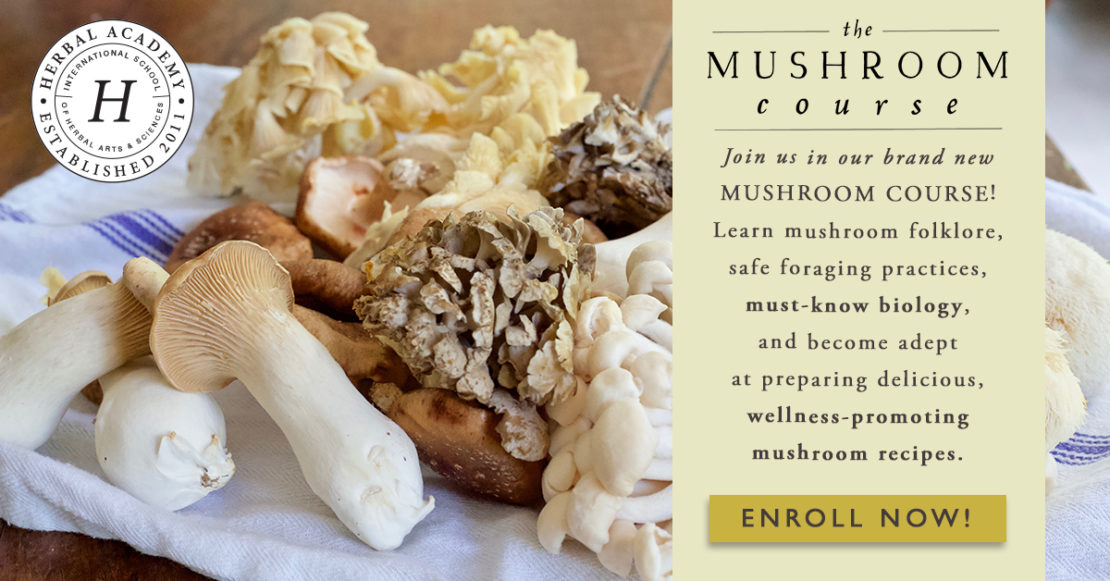
Learn Even More About Mushrooms for Wellness!
Are you ready to go and stock your home apothecary with some essential mushrooms? We sure are! If you enjoyed this article and would like to learn more about using mushrooms for wellness, we’d like to invite you to join our The Mushroom Course.
This introductory- to intermediate-level course will have you digging into the intricate details of mushrooms, examining the visual characteristics you need to know to differentiate one mushroom from another, and learning how to use identification keys for safe foraging. Not only that but you’ll also learn how to use and prepare mushrooms as both foods and herbs to cultivate wellness.
Check out the full course outline and get early bird pricing right here: https://theherbalacademy.com/product/the-mushroom-course/
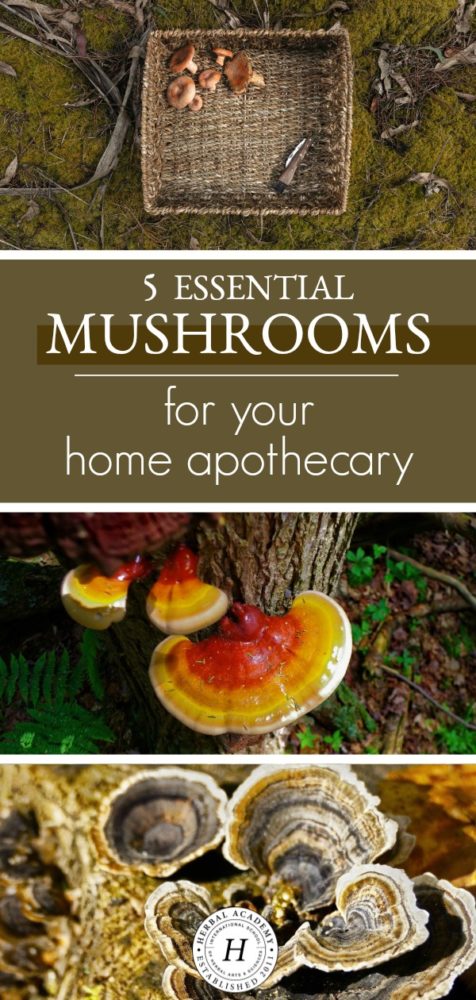
REFERENCES:
Brinker, F. (2010). Herbal contraindications and drug interactions (4th ed.). Sandy, OR: Eclectic Medical Publications.
Chen, J.T., Tominaga, K., Sato, Y., Anzai, H., & Matsuoka, R. (2010). Maitake mushroom (Grifola frondosa) extract induces ovulation in patients with polycystic ovary syndrome: A possible monotherapy and a combination therapy after failure with first-line clomiphene citrate. The Journal of Alternative and Complementary Medicine, 16(12), 1295-1299. http://doi.org/10.1089/acm.2009.0696
Gardner, Z., & McGuffin, M. (Eds.). (2013). American Herbal Products Association’s botanical safety handbook (2nd ed.). Boca Raton, FL: CRC Press.
He, X., Wang, X., Fang, J., Chang, Y., Ning, N., Guo, H., … Zhao, Z. (2017). Structures, biological activities, and industrial applications of the polysaccharides from Hericium erinaceus (lion’s mane) mushroom: A review. International Journal of Biological Macromolecules, 97, 228-237. http://doi.org/10.1016/j.ijbiomac.2017.01.040
Hobbs, C. (1996). Medicinal mushrooms: An exploration of tradition, healing, and culture. Santa Cruz, CA: Botanica Press.
Lin, B.Q., & Li, S.P. (2011). Cordyceps as an herbal drug. In I.F. Benzie & S. Wachtel-Galor (Eds.), Herbal medicine: Biomolecular and clinical aspects, (2nd ed.) Retrieved from https://www.ncbi.nlm.nih.gov/books/NBK92758/
Nagano, M., Shimizu, K., Kondo, R., Hayashi, C., Sato, D., Kitagawa, K., Ohnuki, K. (2010). Reduction of depression and anxiety by 4 weeks Hericium erinaceus intake. Biomedical Research, 31(4), 231–237. https://doi.org/10.2220/biomedres.31.231
Ong, B.Y., & Aziz, Z. (2017). Efficacy of Cordyceps sinensis as an adjunctive treatment in kidney transplant patients: A systematic-review and meta-analysis. Complementary Therapies in Medicine, 30, 84-92. http://doi.org/10.1016/j.ctim.2016.12.007
Pallav, K., Dowd, S.E., Villafuerte, J., Yang, X., Kabbani, T., Hansen, J., … Kelly, C.P. (2014). Effects of polysaccharopeptide from Trametes versicolor and amoxicillin on the gut microbiome of healthy volunteers: A randomized clinical trial. Gut Microbes, 5(4), 458-467. https://doi.org/10.4161/gmic.29558
Powell, M. (2014). Medicinal mushrooms: A clinical guide. United Kingdom: Mycology Press.
Rogers, R. (2011). The fungal pharmacy: The complete guide to medicinal mushrooms and lichens. Berkeley, CA: Ten Speed Press.
Sitkoff, A. (2015). Oregon reishi. Retrieved from https://reishiandrosesbotanicals.com/2015/04/05/ganoderma-oregonense/
Winston, D., & Kuhn, M. (2008). Winston and Kuhn’s herbal therapy and supplements: A scientific and traditional approach. Philadelphia, PA: Wolters Kluwer Health.
Winston, D., & Maimes, S. (2007). Adaptogens: Herbs for strength, stamina, and stress relief. Rochester, VT: Healing Arts Press.
Wu, J.N. (2005). An illustrated Chinese materia medica. Oxford, UK: Oxford University Press.
Yu, X., Mao, Y., Shergis, J.L., Coyle, M.E., Wu, L., Chen, Y., … & Xu, Y. (2019). Effectiveness and safety of oral Cordyceps sinensis on stable COPD of GOLD Stages 2–3: Systematic review and meta-analysis. Evidence-Based Complementary and Alternative Medicine, 2019. https://doi.org/10.1155/2019/4903671
Zhang, H.W., Lin, Z.X., Tung, Y.S., Kwan, T.H., Mok, C.K., Leung, C., & Chan, L. S. (2014). Cordyceps sinensis (a traditional Chinese medicine) for treating chronic kidney disease. Cochrane Database of Systematic Reviews, 12. http://doi.org/10.1002/14651858.CD008353.pub2







